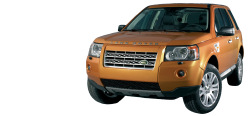ad210358
Member Since: 12 Oct 2008
Location: Here and There
Posts: 7464


|
Bit more on the Ingenium.
Jaguar Land Rover has revealed further details of the Ingenium four-cylinder engines which it will begin manufacturing in early 2015.
The Tata Motors-controlled firm says its new engine family has been designed to be:
Configurable and flexible to enable seamless installation in a range of new Jaguar and Land Rover vehicles
Scalable, to create smaller or larger displacement variants in the future
Able to accommodate a range of powertrain layouts including rear-, all- and four-wheel drive
Engineered to support manual and automatic transmissions as well as electrified hybrid drive
Easily accepting of new advances in engine technologies as they become available
These turbocharged petrol and diesel engines were developed at JLR's Whitley and Gaydon R&D facilities. In each case, the lightweight alumnium block shares its bore, stroke, cylinder spacing and 500cc cylinder capacity.
A modular design enables the sharing of many internal components and calibration strategies. This reduces complexity, raises quality and simplifies manufacturing, and allows Jaguar Land Rover to react more quickly to changes in global demand, the company believes.
“Customers around the world are increasingly demanding cleaner-running, more efficient vehicles that maintain or even enhance the performance attributes expected of a rugged all-terrain vehicle or a high performance car. Our Ingenium engines deliver this to a new level,” said Wolfgang Ziebart, JLR's Group Engineering Director.
The first engine to enter production, a 2.0-litre diesel known as AJ200D, has a claimed 17% less friction than the existing Ford-built four-cylinder diesel which features in many JLR models.
Ingenium engines feature six key technologies that combine to reportedly reduce friction, add refinement and improve performance. These include:
Roller bearings on cam and balancer shafts, instead of machined-in bearing surfaces
Computer-controlled variable oil pumps which are said to save energy by delivering the optimum amount of oil at all speeds, engine loads and temperatures
Computer-controlled variable water pumps which adjust the amount of coolant flowing through the engine, based on temperature, speed and driving conditions. The split circuit cooling system is said to lower CO2 emissions by enabling fast warm ups, and provide quick cabin heat on cold days
Simplified cam drive system designed for modular application
Crankshafts that are offset from the centre of the block
Electronically controlled piston cooling jets to improve efficiency in the oil pumping circuit. Jets are switched off when piston cooling is not needed. They also enable the engine to reach its optimum operating temperature faster, further helping to reduce CO2 emissions
All Ingenium engines will be equipped with so-called 'efficient' turbochargers, central direct high-pressure fuel injection, variable valve timing and start-stop.
JLR says the new family has undergone the equivalent of more than eight years of the toughest, most punishing testing that its engineers could devise. These tests are said to include a wide range of integrity and durability testing, including more than 72,000 hours of dyno testing and two million miles of real-world testing.
Despite adding features and increasing power output, Ingenium engines weigh as much as 80kg less than today’s equivalent engines, JLR further notes - presumably this refers to the Ford-supplied four-cylinder petrol and PSA supplied four-cylinder diesel engines.
“Ingenium fulfils our commitment to offer our global customers some of the most advanced powertrains available in some of the lightest vehicles in the premium SUV and performance car segments,” said Ron Lee, Jaguar Land Rover Director of Powertrain Engineering.
“Being configurable and flexible are the two key strands of Ingenium’s DNA because we have future-proofed our new engines from the outset. Ingenium will be able to accept new advances in fuel, turbocharging, emissions, performance and electrification technologies when they are ready and accessible to be deployed.
“We were able to design Ingenium in this way because we had the rare opportunity to start the project with a clean sheet of paper. We weren’t locked into any of the usual restrictions that force engineering compromises because we had no existing production machinery that would dictate design parameters, no carryover engine architectures to utilise and no existing factory to modify,” said Lee.
http://www.just-auto.com/news/technical-de...47947.aspx
|
















![]()


